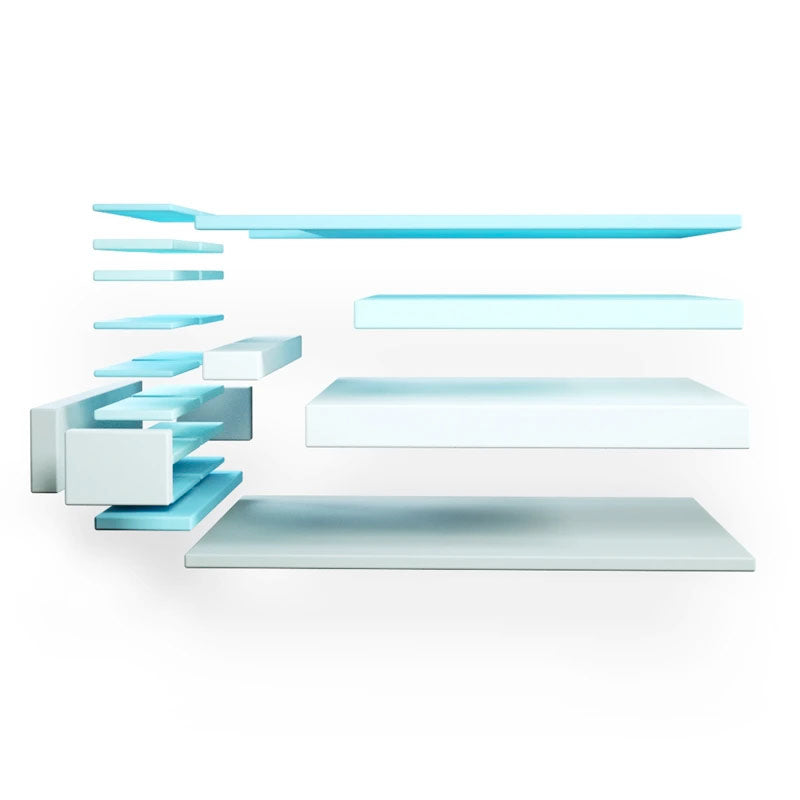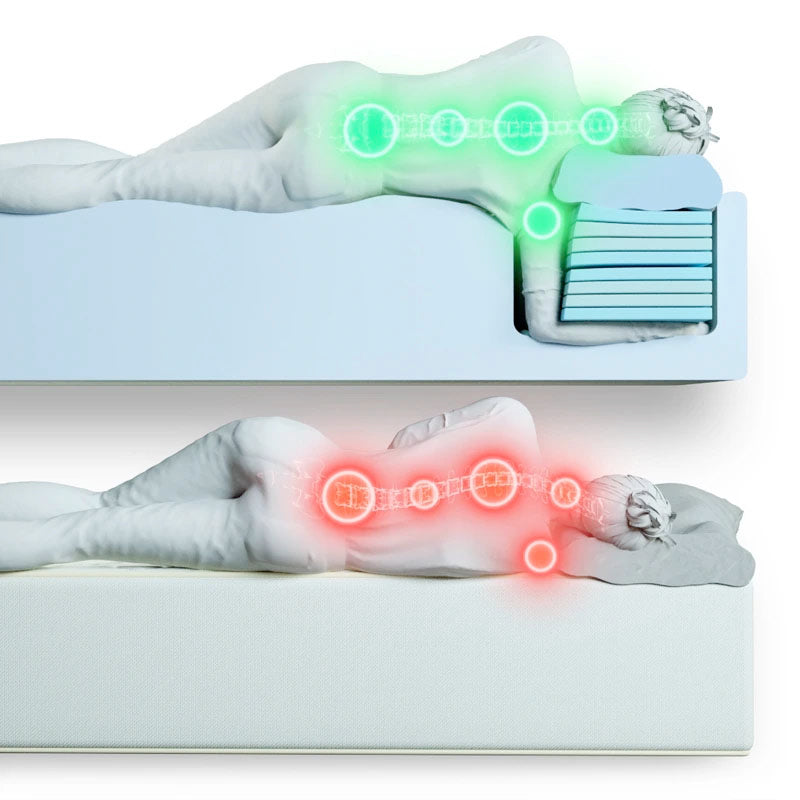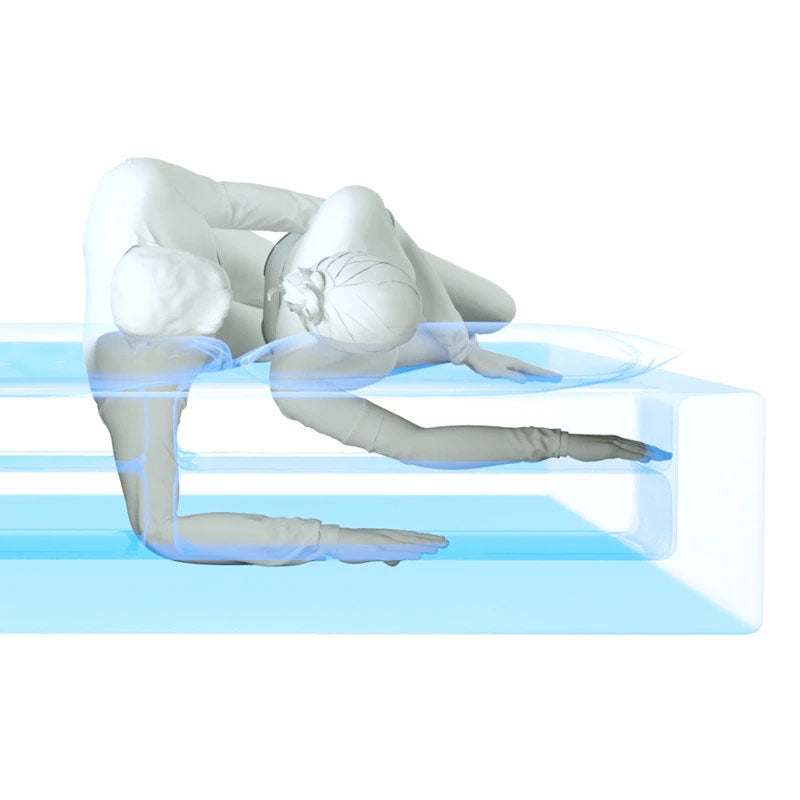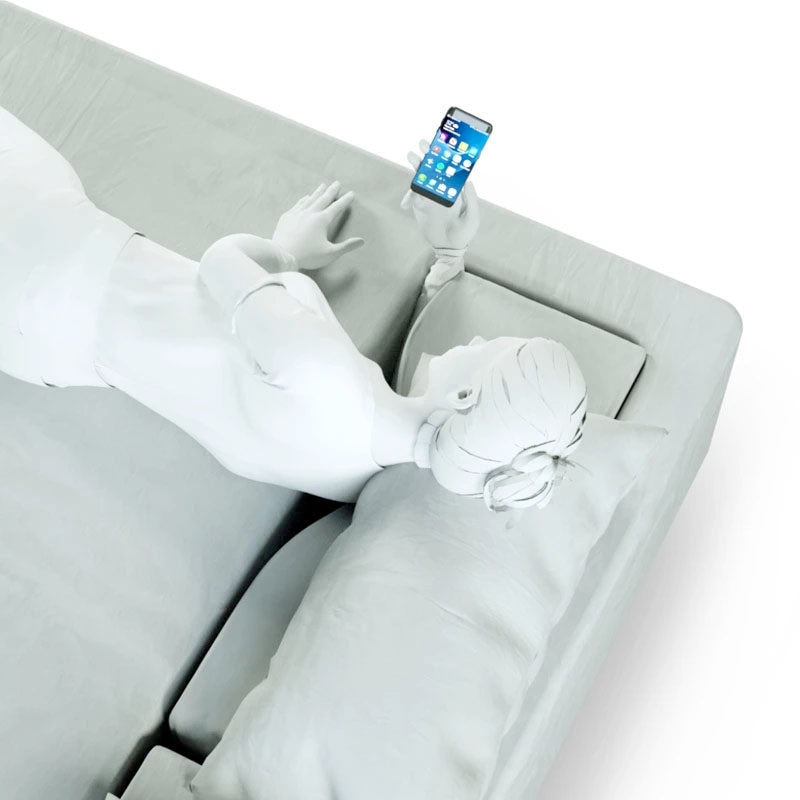To put it simply, the International Space Station is a research laboratory. The spacecraft orbits the Earth, testing new technology and performing science experiments. Any research conducted on the ISS primarily studies what happens to human beings when they live in space for prolonged periods. Partners operating the ISS are the United States, Canada, Russia, Europe, and Japan.
Russia launched the first piece of the ISS in 1998. Subsequently, other countries launched more pieces over a two-year period until the spacecraft was inhabitable. The first crew to inhabit the ISS arrived on November 2, 2000. Since that time, numerous astronauts have called the ISS home.
The ISS is big enough to cover an entire football field, and it weighs nearly 1 million pounds. It has numerous modules where astronauts conduct research and live. The outside of the spaceship is covered in solar arrays, which collect sunlight and turn it into electricity to help power the ship.
Read on as we explore sleeping in the International Space Station — and how SONU can help you sleep soundly, right at home.
Do Astronauts Go Outside the ISS?
Yes. The ISS has airlocks, which are similar to doors. Astronauts open these airlocks and go outside to take spacewalks. There are robot arms attached to the ISS that are used to help astronauts move around outside of it and conduct experiments.
The spacecraft also has docking ports, allowing other spacecraft to connect to the ISS, allowing new crew members and visitors to enter the spaceship. These docking ports are also used to transport goods onto the ISS.
Sleeping In Space
Astronauts try to sleep eight hours per night. In 2021, astronaut Shannon Walker wrote an excerpt that stated astronauts’ bedtime was 9:30 p.m. Sometimes there are more astronauts than there are available beds. The space crew does not view this as a problem; any surface inside the spaceship can be used to attach a sleeping bag. The walls, the floor, and the ceiling are all fair game for a sleep space.
Due to microgravity in space, astronauts have to attach their beds to surfaces to not float around the spaceship. In space, astronauts are weightless and can sleep in any position they desire.
The ISS currently has seven sleeping quarters, called crew cabins, where astronauts’ sleeping bags are attached to the walls. Each crew cabin is the size of a phone booth and only big enough for one person. In addition to the six sleeping quarters, the international space station has a gym, two bathrooms, and a 360-degree bay window.
The sleeping bags each have a cushion inside to emulate a mattress. Besides sleeping bags, what else is inside the sleeping quarters? Each pod contains a pillow, an air vent, a laptop, a lamp, and a space for personal items.
To block out noises and light on the ISS, astronauts typically use earplugs and eye masks. Light, especially, can be a problem because astronauts typically see a sunrise every 90 minutes while in space.
How Well Do Astronauts Sleep in Space?
In a study by the National Center for Biotechnology Information, U.S. National Library of Medicine (NCBI NLM), it was found that astronauts sleep an average of six hours per night. However, many astronauts reported that they slept fewer than five hours per night.
The NCBI NLM found that disrupted sleep is common among astronauts due to high vigilance workloads, microgravity, and monotonous repetition. The researchers found that many astronauts experienced shorter rapid eye movement (REM) sleep cycles.
REM sleep is important because parts of the brain are stimulated, crucial for learning and retaining information. REM sleep is pertinent to overall health.
What Is the Importance of a Good Night’s Sleep?
Sleep plays a massive role in our mental and physical health. Without it, we won’t feel as refreshed and recharged the following day. Sleep helps support our immune system, helps us maintain a healthy weight, lowers our risk for health issues, can help reduce stress and boost our mood, and support our cognitive function.
You may be asking, how much sleep do we really need?
The National Sleep Foundation and American Academy of Sleep Medicine recommend eight hours of sleep per night for an alert performance. Five out of eight tests showed that astronauts’ lack of sleep affected short-term memory, careful operation, and attentive search.
If you do not get enough sleep consistently, it can increase your risk of heart and kidney disease, high blood pressure, diabetes, and stroke. With consistent, restful sleep, potential health problems can be avoided.
It’s safe to say that getting enough sleep is extremely important! If you struggle to get enough sleep, consider the SONU mattress with an immersive Comfort Channel, Support Pillows, and sink-in support.
How Can I Improve My Sleep?
If you’re having trouble falling asleep at night, you may need to make some adjustments to your sleep routine. Here are some tips on how you can mindfully improve your sleep:
Stick to a sleep schedule
Make sure you set a time you want to go sleep and strive to go to sleep at that time every night. By doing so, your body will get used to that time schedule, therefore leading to improved sleep over time. Sticking to a sleep schedule in space can be hard, so take it day by day and adjust it as you see fit.
Monitor your diet
Nutrition plays an important role in our sleep. If you are not eating enough fiber, protein, fats, or carbohydrates throughout the day, it can affect your sleep patterns. Caffeine and alcohol can also affect the amount of sleep you get since it keeps your mind active and alert.
Create a restful sleep schedule environment
By creating a comfortable sleep environment, you’ll put your body at ease right before you fall asleep. This can be hard to do when you’re in space, so adjust the below recommendations as needed.
Try putting your phone down at least 30 minutes before you plan on falling asleep. Blue light can keep your mind active as it tricks you into thinking it is still daylight. In addition, make sure your pillows and mattress are comfortable. If you are someone who cannot sleep in complete silence, try putting on a sound machine or a fan for a calming effect.
Exercise
Staying active during the day can help you fall asleep later in the day. If you exercise regularly, you’ll most likely be more tired before heading to bed.
Create a pre-bedtime routine
If you really want to unwind before bed, try listening to some music, take a warm bath, stretch, drink some hot tea with honey, read a good book, or write down your thoughts in a journal. Even doing little tasks you enjoy can help you finish the day on a strong note. While all of these tasks can’t be completed in space, you can always try to improvise.
Upgrade Your Bedding
If you’re often uncomfortable in bed, the chances are that it will be difficult to fall asleep. Ready for a mattress upgrade? SONU can help.
The SONU Sleep System features sink-in support, a plush layer of serene foam, and Support Pillows for optimal head and neck comfort. Made with side sleepers in mind, the SONU mattress helps prevent uncomfortable pressure in your arms and shoulders thanks to the patented Comfort Channel. Try SONU for an unforgettable sleeping experience.
Sleeping Soundly With SONU
Where you sleep is just as important as how much sleep you get. For astronauts, that means additional padding in their sleeping bags. But for the rest of us, that means making sure our beds are equipped with a good quality, comfortable mattress.
SONU Sleep believes that many factors play a role in getting a quality night of sleep. From comfort and temperature to noise and stress levels, these can all play a part in how well you sleep. With their revolutionary technology, SONU’s state-of-the-art sleep system mattress will truly help you sleep soundly when bedtime rolls around.
For an immersive sleep experience you won’t forget, try the SONU Sleep System mattress and accessories.
Sources:
International Space Station Facts and Figures | NASA
International Space Station Is About To Get Crowded, And It's Running Out Of Beds | NPR
Sleeping in space | Canadian Space Agency
What Is the International Space Station? | NASA
On-orbit sleep problems of astronauts and countermeasures | NCBI
REM Sleep: Why is it important? | Sleep Association
How Much Sleep Do We Really Need? | Sleep Foundation
Sleep Deprivation and Deficiency | NHLB
The Link Between Nutrition and Sleep | NSF






















